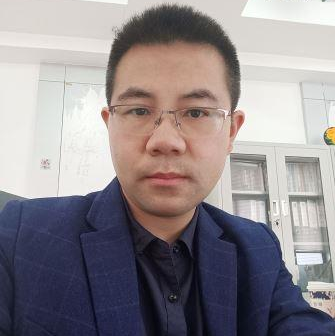Artificial Intelligence and Smart Sensor-Based Industrial Advanced Technology
A special issue of Sensors (ISSN 1424-8220). This special issue belongs to the section "Industrial Sensors".
Deadline for manuscript submissions: 30 June 2024 | Viewed by 14061
Special Issue Editors
Interests: human interface sensor; self-powered sensor; wearable sensor; digital twin; data confusion
Special Issues, Collections and Topics in MDPI journals
Interests: smart equipment; IoTs; machine learning; VR and AI
Special Issue Information
Dear Colleagues,
With the rapid development of the smart sensor and industrial information, industrial processes and manufacturing technology could dramatically benefit from artificial intelligent technology (machine learning, machine vision, multi-sensor fusion, cloud computing, edge computing, digital twin, etc.). In the past few years, intelligent process and manufacturing technologies have received significant research efforts from numerous research groups across the world, leading to in-depth innovation and rapid advancement in the field. Other than the development of quality prediction and defect detection, intelligent manufacturing technologies can also be adapted to develop process control systems, ranging from smart sensor deployment, IoT sensor nodes, virtual reality, fussy systems, etc. Enabled by the innovative machine learning algorithms and enhanced calculated performance, multi-sensor-based intelligent process control systems could eventually be realized, rendering a large variety of promising applications in the new era, such as smart homes, smart factories, decision support systems, robotics, etc. This Special Issue seeks to showcase research papers and review articles in this field and welcomes contributions devoted to the design, fabrication, characterization, integration, and application of artificial intelligence and smart sensors and advanced industrial process systems, with a particular interest in multi-sensor fusion; machine vision technologies; digital twin technologies; human-machine interface; IoT; machine learning; big data; and other applications.
Dr. Jianxiong Zhu
Dr. Zhijie Xia
Dr. Longhui Qin
Guest Editors
Manuscript Submission Information
Manuscripts should be submitted online at www.mdpi.com by registering and logging in to this website. Once you are registered, click here to go to the submission form. Manuscripts can be submitted until the deadline. All submissions that pass pre-check are peer-reviewed. Accepted papers will be published continuously in the journal (as soon as accepted) and will be listed together on the special issue website. Research articles, review articles as well as short communications are invited. For planned papers, a title and short abstract (about 100 words) can be sent to the Editorial Office for announcement on this website.
Submitted manuscripts should not have been published previously, nor be under consideration for publication elsewhere (except conference proceedings papers). All manuscripts are thoroughly refereed through a single-blind peer-review process. A guide for authors and other relevant information for submission of manuscripts is available on the Instructions for Authors page. Sensors is an international peer-reviewed open access semimonthly journal published by MDPI.
Please visit the Instructions for Authors page before submitting a manuscript. The Article Processing Charge (APC) for publication in this open access journal is 2600 CHF (Swiss Francs). Submitted papers should be well formatted and use good English. Authors may use MDPI's English editing service prior to publication or during author revisions.
Keywords
- artificial intelligence
- smart sensor
- multi-sensor fusion
- machine vision
- machine learning
- defect detection
- failure prediction
- industrial big data
- digital twin
- cloud computing
- edge computing
- decision support system
- intelligent manufacturing








